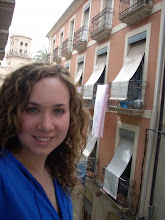As the Hispanic population of the United States continues to rise, issues regarding language differences and consequent conflicts are also becoming a major concern. As of July 1, 2006, the number of Hispanics living in the United States totaled 44.3 million, making up 14.8% of the entire population. It’s only reasonable to assume that as the demographics of many American communities are changing, so are the environments of their public schools. (United States Embassy, 2007)
This project focuses on the city of West New York, New Jersey, where 79.1% of its residents are Hispanic and another 79.3% speak a language other than English. As a hopeful future teacher, I aim to find how this staggering majority of Spanish-speaking individuals has affected the city’s public schools. (U.S. Census Bureau, 2006)
In gathering data for this project, I was guided by the following questions:
How does the English-Spanish language barrier affect student-teacher relationships, particularly with Spanish-speaking students who do not speak English as their first language? What are the implications for classroom learning?
A city like West New York, which is a Hispanic enclave, was an ideal environment to try to understand it’s lingering effects on the city’s schools. I hoped to discover more in-depth information about where exactly these students are coming from.
My research took me to West New York’s Memorial High School, where I was able to interview a student, Esther Rodriguez, and three teachers with more than 30 years experience at the school: Mariluz Garcia, an ESL teacher; Nila del Rio, an ESL teacher; and Kathy DeKranis, an English teacher. Through their stories and experiences I was able to gain a great deal of insight into teaching in a school where the majority of the student body speaks Spanish.
Through last year’s school report card narrative from the New Jersey Department of Education, Memorial High School principal Robert Sanchez addressed the school’s need to accommodate “the individual needs of our diverse, urban student population.” While recognizing the varied needs of the students, Sanchez also touched upon the “alternative programs for our at risk population [like the] English as a Second Language students, who have had limited formal education.”
As I gather more information about these programs, the students, their backgrounds and the teaching atmosphere, it will shed light into the type of work and effort needed of a teacher in this environment. Urban issues like poverty and crime inevitably come into play, but with the added stress of a language barrier, it will be interesting to find out what sort of strains are being placed on public school teachers.
This project aims to discover what is required of a teacher to successfully teach in this type of environment and ultimately ascertain the implications of the English-Spanish language barrier.
Sunday, April 5, 2009
Subscribe to:
Post Comments (Atom)

Fascinating subject, btw. I'm looking into ESL/bilingual related issues too (with more of a focus on resources, financial and otherwise). It really is amazing how many areas in this state have a large number of non-English speaking (or at least limited English-speaking/bilingual) people in their population. It's something we, as teachers, will have to deal with more and more as immigration increases.
ReplyDeleteIt'll be interesting to see the direction you take this in.